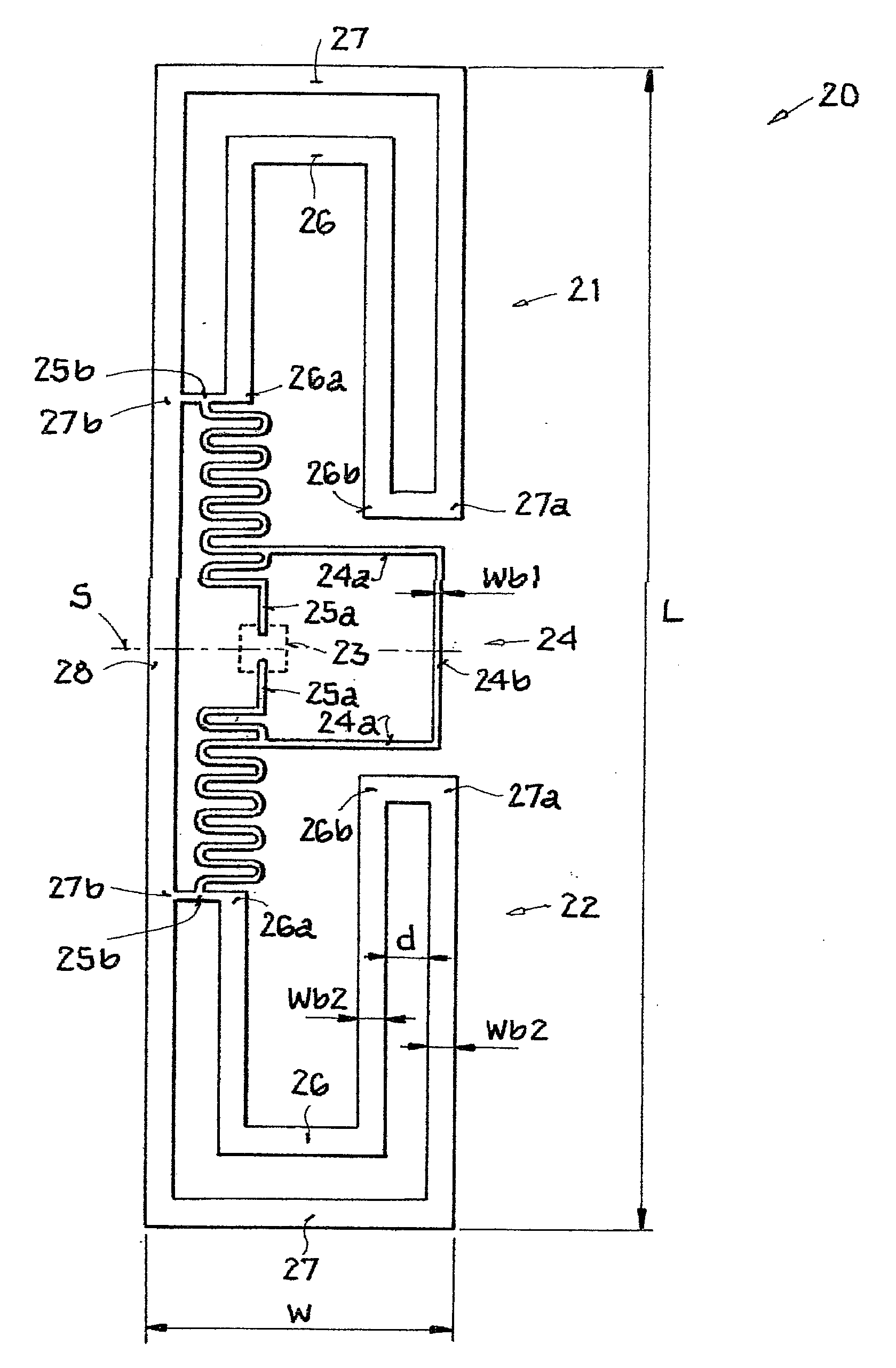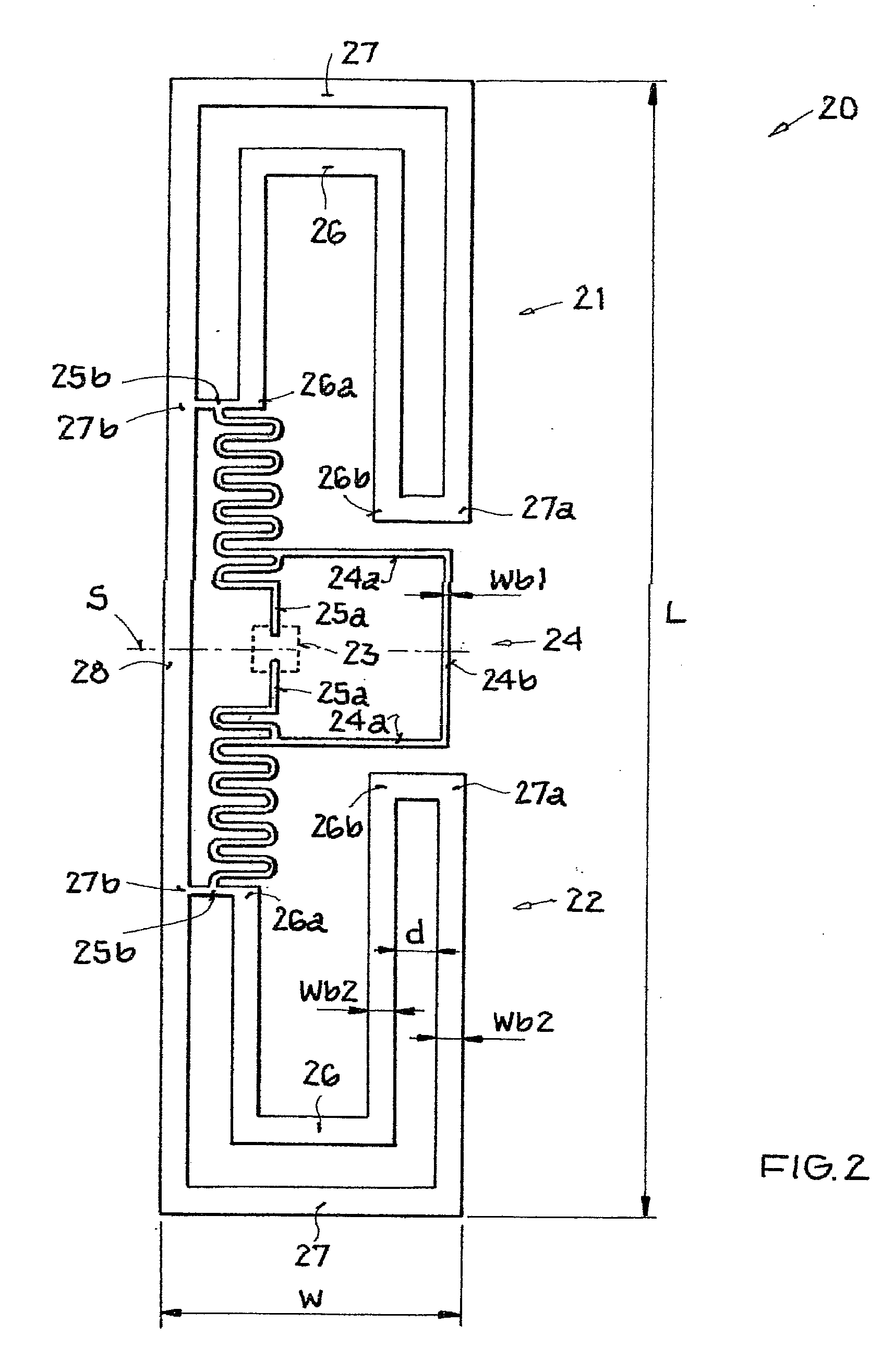Antenna for a backscatter-based RFID transponder
a backscatter-based rfid and antenna technology, applied in the direction of resonant antennas, instruments, burglar alarm mechanical actuation, etc., can solve the problems of reducing the range, reducing the cost of transponder implementation, and reducing the range of the antenna, so as to achieve wide-band reception, simple and inexpensive implementation, and simple
- Summary
- Abstract
- Description
- Claims
- Application Information
AI Technical Summary
Benefits of technology
Problems solved by technology
Method used
Image
Examples
Embodiment Construction
[0034]FIG. 1 schematically shows an example of an RFID system. The RFID system 10 has a base station 11 and at least one inventive transponder 15. By means of high-frequency radio signals, the base station 11 exchanges data with the transponder or transponders 15 in a contactless and bidirectional fashion.
[0035]The base station 11 has at least one antenna 12 for transmitting and receiving radio signals in an operating frequency range fB, a transmitting / receiving unit 13 connected to the antenna(s) for transmitting and receiving data, and a control unit 14 connected to the transmitting / receiving unit for controlling the transmitting / receiving unit 13.
[0036]The backscatter-based passive or semi-passive transponder 15 has an antenna 16 for receiving the radio signal spectrally located in the operating frequency range fB, and has, connected to the antenna, a receive circuit 17 for demodulating the received radio signal and for detecting the data contained therein. The receive circuit 17...
PUM
 Login to View More
Login to View More Abstract
Description
Claims
Application Information
 Login to View More
Login to View More - R&D
- Intellectual Property
- Life Sciences
- Materials
- Tech Scout
- Unparalleled Data Quality
- Higher Quality Content
- 60% Fewer Hallucinations
Browse by: Latest US Patents, China's latest patents, Technical Efficacy Thesaurus, Application Domain, Technology Topic, Popular Technical Reports.
© 2025 PatSnap. All rights reserved.Legal|Privacy policy|Modern Slavery Act Transparency Statement|Sitemap|About US| Contact US: help@patsnap.com



